Why Is Cupid the Symbol of Valentine’s Day?
Updated: Mar. 09, 2024
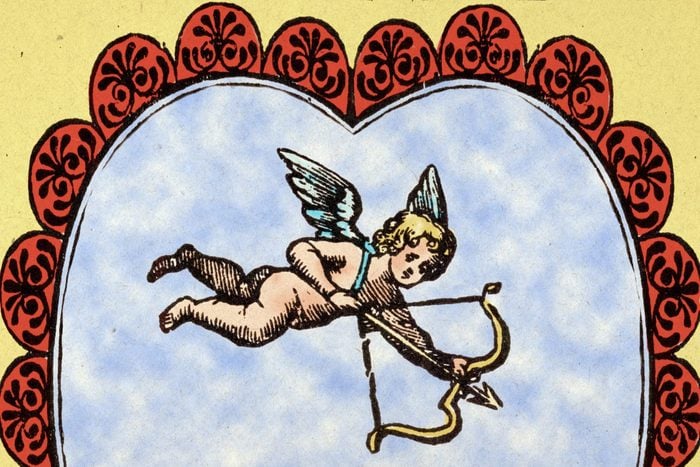
Valentine Cupid is one of the popular Valentine's Day characters, but how much do you know about this chubby mythical matchmaker?
As Valentine’s Day approaches, there’s one figure you’ll probably see everywhere you look. You won’t be able to miss him while thinking up Valentine’s Day ideas, from a romantic dinner at your favorite restaurant to browsing the many Valentine’s Day flowers to gift to your love. That’s right: We’re talking about that winged warrior of romance, the Valentine Cupid. Armed with his trusty bow and arrows, Cupid is one of the popular Valentine’s Day characters. He zips around the clouds, eager to make love connections wherever he goes.
But how much do you really know about this liaison of love? If you want to surprise your significant other by dressing as Cupid for Valentine’s Day, or if you simply want to learn more about the Valentine Cupid, keep reading below!
Get Reader’s Digest’s Read Up newsletter for more holiday tips, history, humor, cleaning, travel, tech and fun facts all week long.
Why is Cupid a baby?
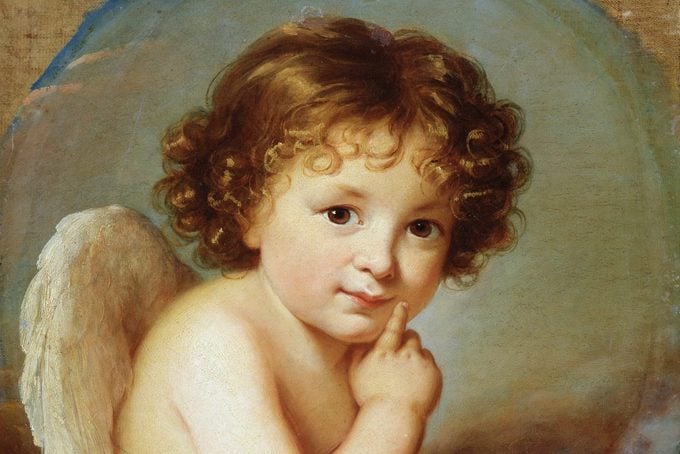
The Valentine Cupid you can easily call to mind is an interpretation of Eros, the Greek god of love. He appeared as a handsome youth in early art and poetry, but by the Hellenistic period—which spanned from 323 B.C.E. to 31 B.C.E.—he’d morphed into the chubby winged child we know and love today. “Representing Eros as a child, and subordinate to his mother, is a way of containing or limiting the power that love was thought to have over us,” says Catherine Connors, PhD, a classics professor at the University of Washington.
So what does Eros have to do with Cupid? A lot, actually. The Romans reinterpreted many Greek myths, and Eros is no exception. Once he was adopted by Roman culture, he was renamed Cupid, which stems from the word for “desire.”
While his name may have changed, the Romans kept Cupid’s more recent Greek incarnation of the less threatening, chubby-cheeked child. Modern representations often conflate Eros and Cupid in the version of the Valentine’s Day Cupid that screams “Happy Valentine’s Day” today.
Who is Cupid the god?
According to Roman mythology, Cupid was a god born of Mercury, the messenger of the gods, and Venus, the goddess of love. Armed with a bow and arrows (they’re on your Valentine’s Day bingo card for a reason), he dealt in love and passion, forcing it upon his victims with the prick of an arrow.
His Greek counterpart has a murkier background. Some early stories claim Eros was a primeval god believed to be the son of Chaos. Later Greek mythology established him as the son of Aphrodite, goddess of love and beauty. Although the identity of his father is unclear, Eros is most commonly said to be the son of Ares, the god of war.
Like the Roman god Cupid, Eros concerned himself with love and passion, making mischief and playing with lives by piercing humans and gods alike with his enchanted arrows.
Was Cupid always associated with romance?
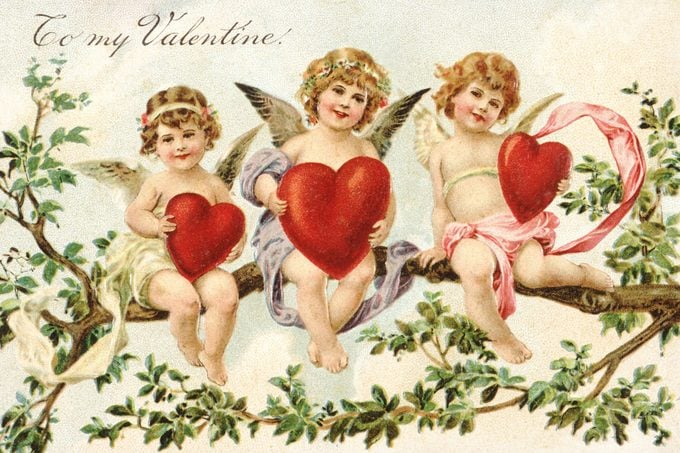
That’s a hard no. Today, the Valentine Cupid is seen as one of the most popular Valentine’s Day characters (for Galentine’s Day too!). He’s an iconic symbol of love and romance, but his journey to becoming the poster boy for Valentine’s Day was a long one, with some twists along the way.
In the original Greek myths, Eros played with the emotions of both gods and mortals, and not always in the nicest of ways. In one story, he caused the god Apollo to fall in love with the nymph Daphne—then made sure the love was unrequited. In other stories, love turned dangerous.
This dark streak could perhaps be traced back to Eros’s mother. In some variations of the legend, Aphrodite became jealous of the human woman (Psyche) Eros had fallen in love with and tricked Eros into putting a spell on the woman. Not surprisingly, the story doesn’t have a happy ending.
Why does Cupid have wings?
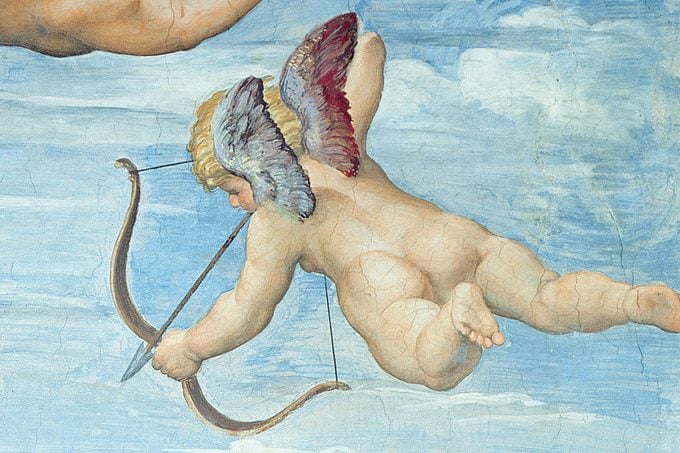
Add this to your Valentine’s Day trivia: Historians see Cupid wings as symbolic. And they’re not unique to Cupid. Eros, too, is depicted as a winged creature in Greek mythology. “It was probably ideas about love being fleeting or capricious that are behind the representation of Eros with wings, which [goes] back to ancient times,” says Connors.
Today’s Valentine Cupid is a nod to both classical gods and Eros’s lover, Psyche. “Sometimes Eros is represented with a female figure with wings; this is Psyche,” says Connors. “This Greek word for ‘soul’ is also the word for ‘butterfly,’ so we know they thought of the soul as a winged being. Images of Eros and Psyche in love are a way of expressing the idea that being in love transforms us as people.”
What role has Cupid had in literature and pop culture?
It’s not shocking to find a few people dressed as Cupid for Valentine’s Day. The little cherub has made a bigger mark than you may realize. And no, we’re not talking about the ubiquitous image of Valentine’s Day Cupids. Sure, that little guy has become synonymous with Feb. 14 and printable Valentine’s Day cards, but his origin story has also inspired some of the most beloved tales of all time.
Yes, he’s appeared in romantic movies, as has Eros. But believe it or not, Cupid was once the star (or at least the co-star) of longer, more serious written works. “The most extended literary representation of Cupid is in a novel written in Latin, about 160 C.E., by Apuleius, who was from North Africa,” says Connors.
His Greek counterpart has had a major impact on literature—and one of your favorite Disney movies. Eros’s mythological soap opera inspired a literary work that serves as the root of a modern classic. “[Eros] and Psyche were part of the inspiration for the story of Beauty and the Beast, written in 1740 by Gabrielle-Suzanne de Villeneuve,” says Connors. “In my view, this means that the dancing teapot and candlestick you remember in Disney’s Beauty and the Beast go all the way back to Cupid’s invisible servants in Apuleius’s novel.”
How did Cupid become the Valentine’s Day mascot?
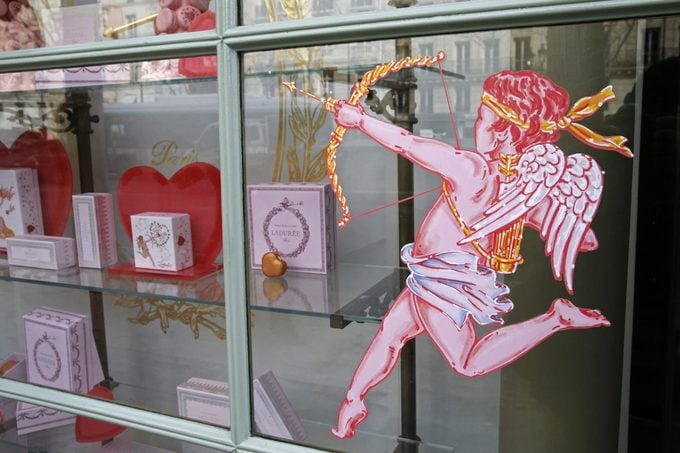
You can’t celebrate Valentine’s Day without having Cupid as your mascot. For centuries, Feb. 14 has been seen as a celebration of romance, hence the Valentine’s chocolates and romantic restaurants. Cupid likely seemed a natural fit to represent the holiday.
“The poet Chaucer, in a poem about birds, associates Valentine’s Day with love and may be drawing on earlier folk traditions,” says Connors. “Visually, the long artistic tradition of depicting Eros/Cupid with his mother, the goddess of love, persisted and was available when Valentine’s cards began to be commercially printed in the mid–19th century.”
Despite Cupid’s colorful and complicated past, hopeless romantics everywhere relish the notion of a mischievous yet well-intentioned tyke (one who now uses his power for good instead of evil) floating around and matching up those who are destined to be soul mates. That has, no doubt, contributed to the staying power of the Valentine Cupid.
Where will you find Cupid today?

Now that Cupid has become a Valentine’s Day staple, you will see him everywhere as the romantic holiday approaches. He appears on romantic and funny Valentine’s Day cards alike, and pops up on decorations and in flower arrangements filled with roses. Cupid may date back thousands of years, but he’s as well known today as he was in ancient Rome, and you’d be hard-pressed to get to Feb. 14 without seeing his cherubic face.
About the expert
- Catherine Connors, PhD, is a professor of classics at the University of Washington in Seattle.
Sources:
- Encyclopaedia Britannica: “Eros”
- Encyclopaedia Britannica: “Cupid”
- Mythology Source: “Who Is the Father of Eros?”
- National Gallery of Art: “Apollo Pursuing Daphne”



